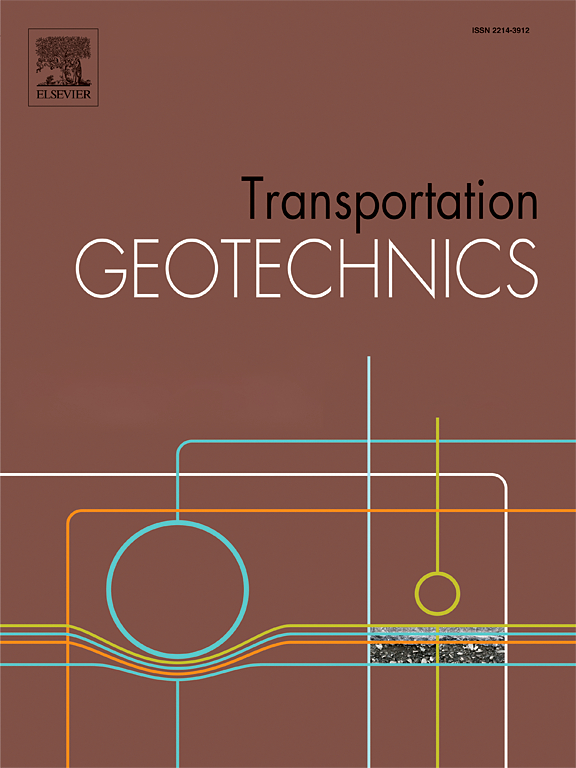Frost heave evaluation and prediction of high-speed railway subgrade with coarse filler in high altitude seasonal frozen region, northwest China
IF 4.9
2区 工程技术
Q1 ENGINEERING, CIVIL
引用次数: 0
Abstract
The subgrade frost heave problem in high altitude seasonal frozen regions is influenced by extreme climatic conditions, geological factors, subgrade structure, and other external variables. Consequently, controlling the frost heave issue becomes challenging. Based on 8 years field monitoring of Lanzhou-Xinjiang high-speed railway (LXHR), the engineering effectiveness of current subgrade anti-frost heave measures in seasonal frozen regions is comprehensively evaluated, and long-term frost heave of subgrade is predicted. The results demonstrate that Geological conditions exert a significant influence on both subgrade frost heave and frozen depth, and the specific manifestations of frost heave are as follows: intermountain basin > Gobi desert > diluvial plain, while the frozen depths are follows: diluvial plain > Gobi desert ≈ intermountain basin. The frost heave in the middle and upper layer of the subgrade (above 1.5 m) constitutes approximately 80 %–87.5 % of the total frost heave. Considering the cumulative increase in subgrade frost heave over time, the subgrade with coarse particle material replacement, and the “two cloth and one film” technique may not be conducive to long-term stability. It is predicted that after 30 years of operation, the subgrade antifreeze layer may transition from being non-sensitive of frost heave to becoming sensitive.
西北高海拔季节性冻土区高铁粗填料路基冻胀评价与预测
高海拔季节性冻土区路基冻胀问题受极端气候条件、地质因素、路基结构等外部变量的影响。因此,控制冻胀问题变得具有挑战性。在兰新高速铁路8年现场监测的基础上,综合评价了季节性冻土区现行路基防冻胀措施的工程效果,并对路基长期冻胀进行了预测。结果表明:地质条件对路基冻胀和冻结深度均有显著影响,冻胀的具体表现为:山间盆地;戈壁沙漠洪积平原,冻结深度为:洪积平原>;戈壁沙漠≈山间盆地。路基中上层(1.5 m以上)的冻胀约占总冻胀量的80% ~ 87.5%。考虑到路基冻胀随时间的累积增加,采用粗颗粒材料替代路基,采用“两布一膜”技术可能不利于路基长期稳定。预计经过30年的运行,路基防冻层可能由对冻胀不敏感转变为对冻胀敏感。
本文章由计算机程序翻译,如有差异,请以英文原文为准。
求助全文
约1分钟内获得全文
求助全文
来源期刊

Transportation Geotechnics
Social Sciences-Transportation
CiteScore
8.10
自引率
11.30%
发文量
194
审稿时长
51 days
期刊介绍:
Transportation Geotechnics is a journal dedicated to publishing high-quality, theoretical, and applied papers that cover all facets of geotechnics for transportation infrastructure such as roads, highways, railways, underground railways, airfields, and waterways. The journal places a special emphasis on case studies that present original work relevant to the sustainable construction of transportation infrastructure. The scope of topics it addresses includes the geotechnical properties of geomaterials for sustainable and rational design and construction, the behavior of compacted and stabilized geomaterials, the use of geosynthetics and reinforcement in constructed layers and interlayers, ground improvement and slope stability for transportation infrastructures, compaction technology and management, maintenance technology, the impact of climate, embankments for highways and high-speed trains, transition zones, dredging, underwater geotechnics for infrastructure purposes, and the modeling of multi-layered structures and supporting ground under dynamic and repeated loads.
 求助内容:
求助内容: 应助结果提醒方式:
应助结果提醒方式:


